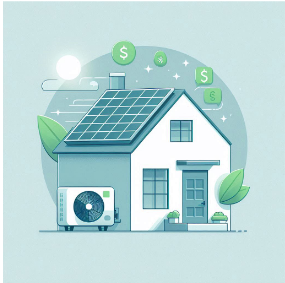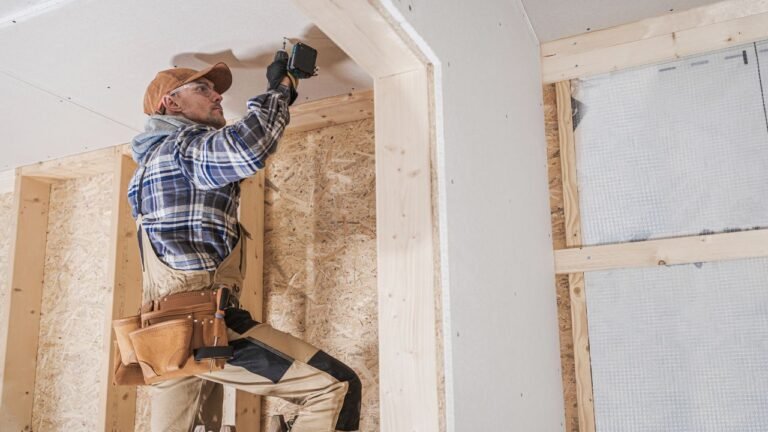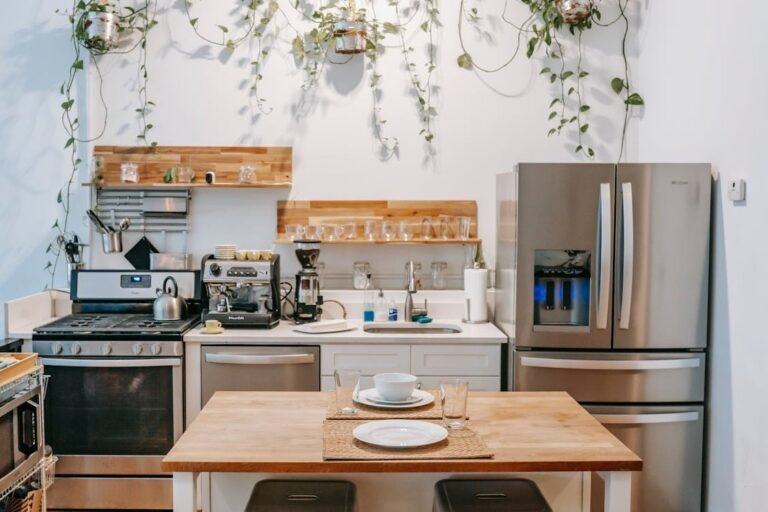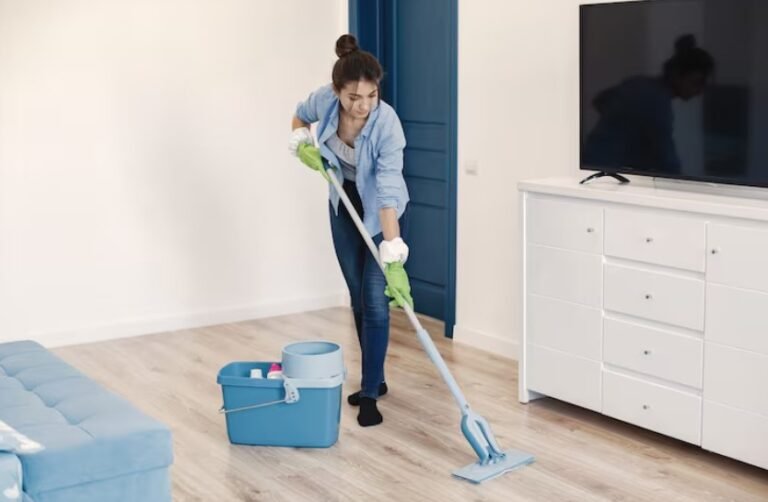
Do you love coming up with ideas? Are you always thinking about how things could be designed better—whether it’s a chair, a coffee mug, or a phone app? If you’re someone who enjoys blending creativity with problem-solving, a bachelor in product design might be the perfect fit for you.
If you’ve been looking into upgrading your cooling system in Victoria, you’ve probably come across the Victorian Energy Upgrades (VEU) program. It’s a government initiative designed to make energy-efficient heating and cooling more affordable — and it offers generous rebates to help you make the switch. Sounds great, right?
But here’s where it gets a bit confusing. Not every home gets the same rebate. Some people receive a large discount, while others get less. Naturally, that leaves many homeowners wondering why the difference and what it means for them.
The truth is, the air conditioner rebate in Victoria depends on a few key factors — like where you live, your current setup and the type of system you’re switching to. It’s not one-size-fits-all, and that’s where things can get a little tricky.
In this blog, we’ll walk you through why these differences exist, how the program actually works and what kind of air conditioner rebate Victoria homes might qualify for. Most importantly, we’ll show you how to get the best deal possible — so you can stay comfortable, save on energy bills and make the most of what the VEU program has to offer.
1. What Exactly Is the Victorian Energy Rebate?
The Victorian Energy Upgrades (VEU) program is a government initiative that helps households cut down on energy costs and reduce their carbon footprint. In simple terms, it’s designed to make energy-efficient appliances more affordable by offering rebates or discounts when you upgrade.
That means if you’re replacing your old air conditioner or even installing one for the first time, you could get a decent chunk of the cost covered. The program doesn’t just stop at cooling, either. It also includes rebates for things like energy-efficient lighting, hot water systems and more.
When it comes to air conditioning specifically, the amount of air conditioner rebate Victoria homeowners receive isn’t the same for everyone. It depends on a few things — like what kind of home you have, what system you’re replacing (if any), how much energy you use and the type of unit you’re planning to install. All of these details play a role in how much money you can save. For a deeper look at these factors and how to maximise your rebate, please refer to this blog.
2. Why Do Some Homes Get Bigger Rebates?
It’s not random, several key factors decide how much rebate you get. Here’s what can make a difference:
1. The Size of Your Home
Bigger homes use more energy to stay cool. That means a larger potential for savings and often a bigger rebate.
Tip: Bigger space = bigger rebate.
2. The Air Conditioner You Choose
Energy-efficient systems (especially reverse-cycle units) usually get higher rebates. But only if they’re on the approved VEU list.
Tip: Choose an efficient, approved model.
3. Your Old System (or None at All)
Replacing an outdated or inefficient system can unlock a better rebate. The worse your current setup, the more you might save.
Tip: Old system out = higher rebate in.
4. Where You Live
Hotter or colder areas often qualify for higher rebates, depending on local climate needs. Your postcode matters.
Tip: Extreme weather = bigger rebate.
5. Your Installer or Provider
Some companies are better connected with the VEU program and can secure you a higher upfront discount.
Tip: Use an approved provider who handles the paperwork.
6. Your Income or Concession Status
If you hold a concession card or are on a low income, you could qualify for extra rebates or support.
Tip: Let your installer know if you’re eligible for concessions.
3. How Much Can You Actually Save? (2025 Estimates)
Wondering what kind of rebate you might get? Here are some real-world examples to give you an idea. These are based on the type of system you’re replacing and the new air conditioner you’re installing.
Replacing a hard-wired electric heater with a 3kW–9kW split system? You could get up to $840 off.
Upgrading from a ducted gas heater to four split systems (like 1 large + 3 small units)? That could save you up to $2,520.
Switching from a whole-house gas heater to a powerful multi-split system (10kW)? That might mean up to $2,940 back in your pocket.
Got an old gas room heater? Replacing it with a split system could score you anywhere from $630 to $1,610.
Already have a reverse cycle system and just upgrading? The rebate is smaller, around $210.
No existing system to replace? You could still get $70 to $140 depending on the new unit size.
Replacing a ducted gas heater with a ducted reverse-cycle system (10kW–22.4kW)? That could mean up to $5,530 in rebates.
Upgrading from ducted reverse cycle to a new ducted system? Expect up to $910.
Installing a new ducted system without removing anything? The rebate could still reach up to $410.
Keep in mind, these are just rough estimates. The final discount depends on your exact system size, your home and the provider you choose.
4. How Do You Know If You’re Eligible?
Not sure if you qualify for the rebate? Here’s a quick way to check.
Ask yourself:
- Do you live in Victoria?
- Is your current air conditioner old, inefficient or ready to go?
- Are you replacing an existing system, not just installing a brand new one?
- Is the new unit you’re choosing on the official VEU-approved list?
- Are you using a certified installer who’s part of the VEU program?
- Do you have a concession card or live in an area with high energy use?
The more times you answered “yes,” the better your chances of getting a bigger rebate.
Even if you’re unsure about a couple of these, it’s still worth checking with a VEU-accredited provider. They can assess your home, guide you through the process and help you get the most savings possible.
5. Real Example: Two Homes, Two Very Different Rebates
To see how this works in real life, let’s look at two similar families in Victoria and how their choices affected their rebates.
Family A lives in Bendigo.
They replaced an old 15-year-old evaporative cooler with a new, energy-efficient split system that’s on the VEU-approved list. They also used a certified installer who handled the paperwork.
➡ Result? They scored a rebate of over $1,200.
Family B lives in Melbourne.
Instead of replacing an old system, they just added a second unit to their home, which already had a ducted setup. They chose a brand that wasn’t on the approved list and didn’t go through a VEU-accredited installer.
➡ Result? They only got around $200, missing out on most of the available rebates.
Same state, similar homes, but very different results. Why? It all came down to what they replaced, which unit they chose and who they worked with.
6. How to Get the Most Out of Your Air Conditioning Rebate
If you want to make sure you’re getting the biggest rebate possible, a few smart choices can go a long way.
Start by choosing a VEU-approved air conditioner with a high energy star rating, that alone can boost your rebate. If you’re upgrading from an old or inefficient system rather than just adding a new one, you’ll likely get more back.
It’s also important to go with an accredited installer who’s part of the VEU program. They’ll handle the paperwork and make sure you don’t miss any steps. Some providers are able to pass on more of the rebate directly to you, so it’s worth getting a few quotes and comparing your options.
And if you have a concession card or live in a low-income household, don’t forget to ask about extra support, you might qualify for even more savings.
Finally, don’t wait too long. Rebate amounts can change and some offers may not last forever. The sooner you act, the more you can save.
Final Thoughts
While the Victorian energy rebate program is generous, it’s not a one-size-fits-all deal. The amount you receive depends on how much energy your upgrade will actually save, which is affected by things like the size of your home, what system you’re replacing, the new unit you choose and even where you live.
That’s why it pays to do a little homework before jumping into a new cooling system. Take the time to choose an energy-efficient unit, work with a trusted VEU-accredited provider and don’t be afraid to ask questions along the way.
With the right setup and the right support, your home could be one of the lucky ones getting the maximum rebate and that means big savings upfront and even bigger savings on your energy bills down the track.






